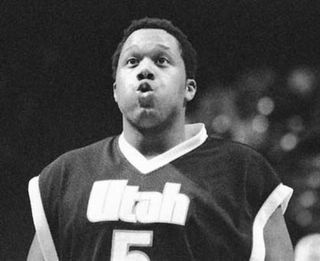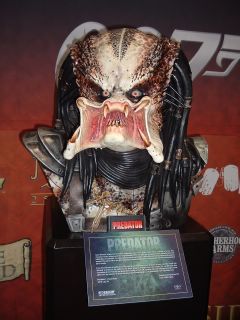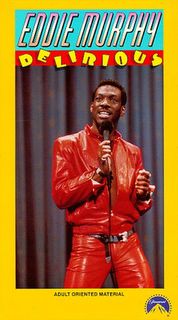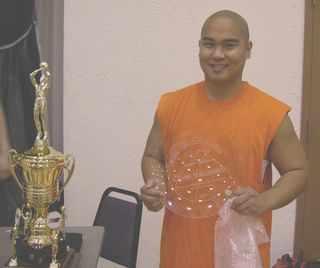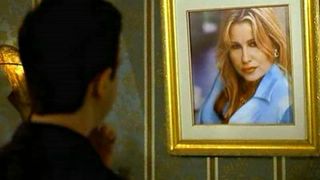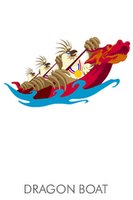Updated!!! PBA Imports: Won't you take me to? 'Tweenertown!
|
Look up "'tweener" in the dictionary and you will find a picture of the legendary Byron Houston. |
Time for a brief detour into William Safire/H.L. Mencken territory -- somewhere I don't really belong. But being "between" two positions implies a reciprocal relationship where 'tweeners are too small for one position and too big for another. But there's really no such thing as too big in basketball, so 'tweeners are almost always just undersized. Magic Johnson was about 7 inches taller than point guards normally are, but the idea of calling him a PG trapped in a small forward's body is downright loony. However, "'tweener" is part of common basketball usage now, so the imprecise language seems like it's here to stay.
'Tweeners don't make it in the NBA. The players are so good there that being three inches shorter than the man you're matched up against is a serious disadvantage. 6'7'' power forwards have to play against 6'11'' guys with the same skills, and most of the time, even guys who play bigger than their height struggle to make an impact.
In Philippine professional basketball, however, American 'tweeners are all the rage.
The PBA's import height limit of 6'6'' is intended to keep native players competitive. Starting guards in the league are usually less than 6-feet tall, and small forwards top out around 6'3''. The tallest Filipino players are about 6'9", and most of them have some serious mixed blood, which in some cases (Mick Pennisi and Asi Taulava, among others), has caused skepticism that they're Filipino imposters ("Fil-Sham" is the local term, a play on Fil-Am, for Filipino-American).
Teams out here want their imports to do everything -- score, rebound, pass, block shots, get steals, etc. 'Tweeners, armed with basketball adaptations and hybrid skills that have allowed them to excel despite their size limitations, often offer the best bang for a team's buck.
The PBA's 'tweener imports also have funny quirks and kinks in their games. These deviations from textbook basketball skills are probably why they couldn't play in the NBA, but the unique styles make them fun players to watch.
Here are some of the imports who caught my eye this conference, for one reason or another:
|
Grab the proton packs. Zool has done it again. |
- Shawn Daniels, Air 21 Express -- Imagine yourself as a young Filipino forward from somewhere on the Visayan Island of Negros Occidental. A 6'4'' stringbean, lanky and fearless. You come from a large, relatively poor family, but you struggled and made it to the PBA. Then you have to deal with Shawn Daniels.
The 6'6'', 250-pound beefcake Daniels, who played college ball for Utah State, looks like the Stay-Puft marshmallow man's politically-correct, ethnically-diverse cousin. He looks like he eats skinny boys like you the same way you eat Negros' famous Bacolod Chicken Inasal. Literally.
But seriously, if the first thing you notice about Daniels is his girth, the second thing you should notice is the expert way he uses it to body lighter players close to the basket. He usually plays the first half on chill, scoring about 8 points on offensive rebounds and letting Air 21's long-distance chuckers Ren-Ren Ritualo and Wynne Arboleda bomb away.
In the second half, Daniels starts pounding. No one in the league is as wide as this guy, with the possible exception of Coke's Fil-Am Ali Peek, who resembles a 6'4'' human brick. Daniels backs defenders down, gets them stuck to his big ol' butt, and just banks shots in all night.
My favorite Daniels move is a staple of New York widebodies. If he's missing shots, it doesn't matter, because he just keeps leaning on his defender to force him out of position and snatching the rebounds, repeating the process several times, inching closer to the basket until he finally makes one. It's as if he's missing on purpose to pad his stats.
An eruption of emotion from Mount St. Greer.
- Quemont Greer, Red Bull Barako -- When he's playing well, Greer is the most exciting player in the league. He's toughest around the basket, especially inside the key, where he's got a soft touch and a knack for getting all kinds of borderline circus shots to fall, even against good defense. He was doing this against Louisville and Cincinatti when he played for DePaul, so he isn't having many problems scoring in the PBA.
The two most entertaining aspects to Greer's game are his ball-handling and the way he carries himself on the court. For a 6'6'' guy with shoulders that appear to be almost four feet wide, he's got some really nice moves off the dribble. No import leaves as many defenders looking confused as he does after a couple hesitation inside-out fakes and a crossover.
Greer also acts like the WWF/WWE's Undertaker on the court. He's a very quiet, reserved guy, and he rarely shows much emotion during games. This is often hilarious because he'll be swatting shots, dunking on people, faking guys out and making them jump in the wrong direction, and all the while he walks around like some kind of stern-faced Dickensian magistrate. (Reader, please note that the Dickens reference is based on my preconceptions of Dickens novels more than my actual knowledge of them.)
Greer plays at the same deceivingly high level of intensity, always looking like he's too cool to exert himself but at the same time scoring more than anyone in the league. He lopes back on defense in a pigeon-toed strut just in time to grab a rebound and key the fast break. Then he glides across half-court, catches the ball at the top of the key, holds it for a moment as if he's wondering what he feels like doing, then breezes past his guy to the rim.
His on-court persona is a lot like his real personality -- extremely reserved. It betrays the fact that he actually plays very hard. But it's great entertainment to watch a guy who so nonchalantly punishes his opponents while they frantically try to stop him.
Odell Bradley at his most cheerful after winning the Mid-Continent Conference Tournament MVP in 2004.
- Odell Bradley, Alaska Aces -- He's a relatively new import and only has a couple games under his belt in the PBA, but they have been impressive. Bradley is more of a true guard than most of the other imports. He's about 6'3'' and 220 pounds and his mean gameface and powerful, squat build are reminiscent of a bulldog.
Hiring a smaller import is an interesting bit of strategy from Alaska, because it upsets the inherent balance in PBA games where imports usually guard each other. It turns the contest into a chaotic free-for-all.
The 6'6'' 'tweener imports can't stick with Bradley on the perimeter, so he gets matched up with a native players. At the same time, Bradley can't handle the bigger Americans inside, so they too get to play against Filipinos.
The end result is a scoring contest. The imports score at will against their native competitors while the supporting casts, instead of watching the two Americans battle one-on-one every other possession, get involved in a free-flowing shootout.
In the Christmas day game between Alaska and the Barangay Ginebra Gin-Kings, Bradley torched his Filipino defender for 21 points in the third quarter and 34 overall. Many of his points came off of extremely difficult off-the-dribble three-point bombs. When they tried to play him close on the perimeter and stop his jumper, he just muscled the smaller Filipino players to the basket and scored that way. There doesn't seem to be anyone to guard him in this league.
(By the way, Alaska is a popular powdered milk brand in the Philippines; although, it would be cool if the 49th state randomly decided to purchase a professional basketball team in the Philippines.)
So listen up, America, the next time you're in Manila and wondering which professional basketball game to go to, find out which team has a smallish import like Odell Bradley. And then don't sit behind the basket unless you want to listen to wailing transvestites cheer on their favorite players for two hours.



